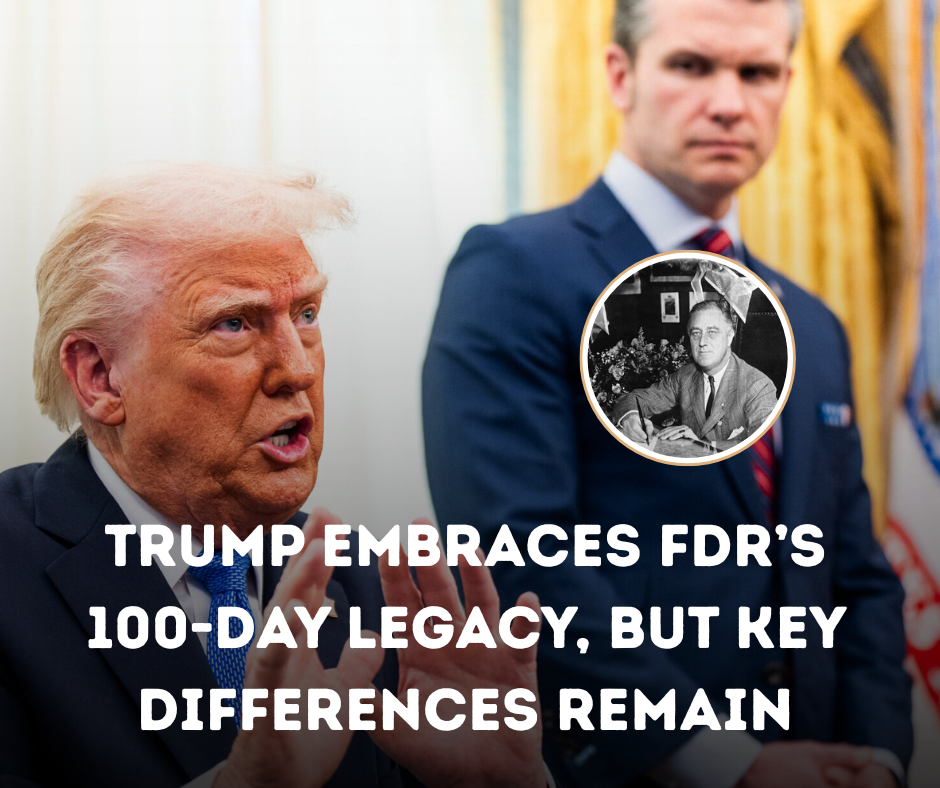President Donald Trump has recently drawn comparisons between his first 100 days in office and the historic early achievements of President Franklin D. Roosevelt. Speaking at a rally and during several interviews, Trump proudly aligned his early accomplishments with FDR’s famous “First 100 Days,” a term that has since become a benchmark for presidential success.
However, while Trump embraces the symbolic weight of FDR’s legacy, political analysts and historians are quick to point out the stark differences between the two leaders and the eras they represent.
Franklin D. Roosevelt took office in 1933 during the height of the Great Depression. His first 100 days were marked by a flurry of legislative activity aimed at economic recovery, financial reform, and relief for suffering Americans. In contrast, Trump’s first 100 days, which began in January 2017, focused more heavily on deregulation, executive orders, and shifting the direction of U.S. policy on immigration, energy, and international relations.
Where FDR launched sweeping federal programs like the Civilian Conservation Corps (CCC) and the Tennessee Valley Authority (TVA) to rebuild the nation, Trump emphasized tax reform, cutting business regulations, and withdrawing from multinational agreements like the Trans-Pacific Partnership.
Another key difference lies in their approach to leadership and communication. Roosevelt famously used his “Fireside Chats” to reassure and unite a fearful public, speaking with calm authority. Trump, on the other hand, made frequent use of social media, particularly Twitter, to energize his political base and directly confront critics, often in a combative tone.
Despite the clear contrasts, Trump’s desire to link his presidency to FDR’s highlights the enduring importance of the 100-day milestone in American political culture. Both leaders, in their own ways, recognized the need to move quickly to set the tone for their administrations.
As the comparisons continue, historians caution that the true measure of a presidency is not just in its first 100 days, but in the long-term impact of its decisions on the country and the world.
For many Americans, particularly those who lived through FDR’s era or grew up hearing stories of his leadership, the comparison brings a mix of nostalgia and debate. Whether one views Trump’s first months in office as a bold course correction or a divisive chapter, it is clear that the shadow of FDR’s leadership continues to loom large over the American presidency.
We will continue to follow and reflect on these historical parallels as today’s political landscape unfolds.
